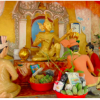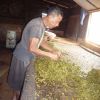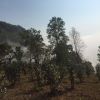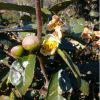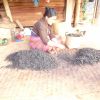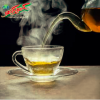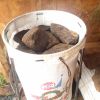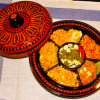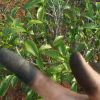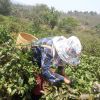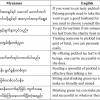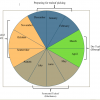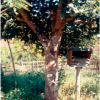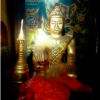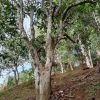The search found 15 results in 0.023 seconds.
Search results
Image depicts a statue erected on Mt. Loi Saing (Paddamyar Taung in Burmese), near Taung Pė Village, situated within Namsam Township, northern Shan State. The statue goes that when the Burmese king Alaungsithu travelled across his new kingdom around the 5th -6th century, he found Palaung people at Loi San Mountain in Southern Shan State. When he found them to be poor and struggling, he gave them laphet seeds believing it would help them find money for their family.
This report released by the Ministry of Health states their persistent monitoring and testing of food products to ensure health safety and promote the well-being of citizens. It further explains that on lab examinations, 43 brands of tea (pickled) on the Myanmar market contained significant traces of Auramine O. Auramine O is a diarylmethane dye used in fabric coloring processes and despite lacking any immediate affect on consumer health, is hazardous and harmful to the kidneys and liver, therefore unsuitable for consumption.
The first step in making steamed, pickled tea the traditional way is to evenly lay out the tea leaves on a reed or bamboo mat. Next, the tea is rolled out by hand. This is done by placing both hands side by side and gently pressing down on the tea leaves with the lower palm of both hands.The steady back and forth motion of the slowly rolls the tea leaves. More and more pressure is added as the tea leaves begin to roll and curl up. This process takes about 15 minutes. Locals may use tea rolling machines if they are available.
Tea trees are kept small by tea growers and are evergreen throughout the seasons. In their natural state, they can grow to be up to 30ft tall. However, tea growers keep their tea tress to within 4-5ft in height. This ensures that the tea trunk remains thick and encourages more leaf and branch growth. Tea growers do so to get as much leaves as possible from their trees as the leaves are the sole product of tea trees. Keeping the tea trees short makes tea harvest easier to harvest.
The name of the tea leaf depends on the region in which it grows and the season time in when it is picked.
Tea blossoms that emerge from the tea tree are left intact during the harvest. These blossoms are pollinated and produce fruits that ripen around Thadingyut and Tazaungmone (around October and November). The most mature fruits fall to the ground and the fruits that remain are picked for the seeds. The capsule-like seeds are egg-shaped and turn slightly brown when ripe. Inside the capsule is 2 or 3 seed pods which contain 2 or 3 seeds.
Dried tea leaf is mostly manufactured in March and April when enough sunshine is available. At that time, the leaves are saturated with oil. It is the best time to make dried tea leaf. It is known as Moe-ma-hmi, Shwe-Phi dried tea leaf. During the months of March and April, dried tea leaves become dry in a day. Then they are sorted out to be marketable. There are two kinds of dried tea leaf namely, hard dried tea leaf and soft dried tea leaf. The soft dried tea leaf is not curled up fully and leaf is thick. The hard dried tea leaf is fully curled up and the leaf is thin.
In the past, fermented tea leaf used to be packed tightly in bamboo containers. It was put in the containers layer by layer. It was kept for at least six months. Nowadays, fermented tea leaf is packed in Penang sacks one layer after another. Then they are well pressed by big pieces of stone. They are left like this for a long time. Then they are ready to be sold. While they are kept in sacks and pressed, the superfluous juices drain outside. It can make the place dirty. However, it cannot affect the quality of the fermented tea leaf.
Some food can be eaten by chewing, others can be eaten by licking and swallowing. As for pickled tea leaf, it is eaten by nibbling and swallowing. If the fermented tea leaf is pickled in peanut oil or sesame oil, it becomes soft and tender. Ancient Myanmar people used to eat pickled tea leaves by
sandwiching them between the thumb and forefinger. Almost every household entertains the guests to pickled tea leaves and green tea. It shows that it is the way how Myanmar people especially those who live in districts entertain the guests.
Tea pickers mainly use their thumb and index fingers, which are stained black from the repeated exposure to tannin from the tea leaves. To avoid this, the pickers now use gloves. For storing the picked tea leaves, tea pickers mostly use wicker baskets called paline in Burmese. After the paline are filled with tea leaves, they are brought back down from the tea hills on a shoulder yoke. Tea picking starts from sunrise and continues through until sunset.
There are several proverbs regarding the taste of pickled tea, Myanmar’s traditional food. The proverbs concerning pickled tea are well-known cultural norms and people like to use them. The table shows the proverbs in two languages, Myanmar and English translation.
In the proverbs concerning pickled tea leaves, Myanmar people’s culture, thinking, belief, and social value can be seen. They use proverbs when they would like to express their ideas and emotions.
Tea cultivation and production in a four-stage yearly cycle. From December to February, the villagers tend their tea plots. In the second stage, which is from March to April, they harvest and produce a type of dried tea called the shwe hpi variant. The third stage is the 4-month fermented tea-making season from May to August. The type of tea harvested and fermented in this season is called khat kant tea. The last stage is the hnin tat dried tea season from September to November.
“Shoulder basket brand” pickled tea leaf with sesame is the very first product in Myanmar (See figure – 1) Fertilizers, as well as insecticides, have not been used in tea plantations. The forty-year-old “shoulder basket brand” pickled tea leaf company owner said “In our company, export goods are manufactured hygienically and attractively. However, goods for local consumption are not produced properly. Like foreigners, indigenous people are human beings. So many diseases occur in Myanmar because of consuming unhygienic food.
In addition to the Buddha and Nats, bicentennial tea trees are held in great reverence in Kyushaw society as benefactors and are worshipped by Kyushaw villagers. As sacred trees, the leaves of these old trees are never plucked. Every year on the full-moon day of the month of Tabaung (late February to early March), around the time of the first tea leaf harvests, the owner of the land where the bicentennial tea tree stands dresses it in “golden robes” i.e., they gild the tea tree in gold leaves using ripe bananas as glue.
To increase knowledge, when trimming a branch, leave about one or two branches of the tea tree and cut all the remaining branches to a height of 16 inches or 22 inches from the ground. Annual branch trim increases yield. As it is a branched plant, it produces more sprouts. fermented tea prefers sprouts, so the more beautiful the sprouts, the higher the price. The branching method should be taught that it is a 100% safe method without plant death. A 40-years-old- secretary of the Palaung Tea Producers and Sellers Association said:

